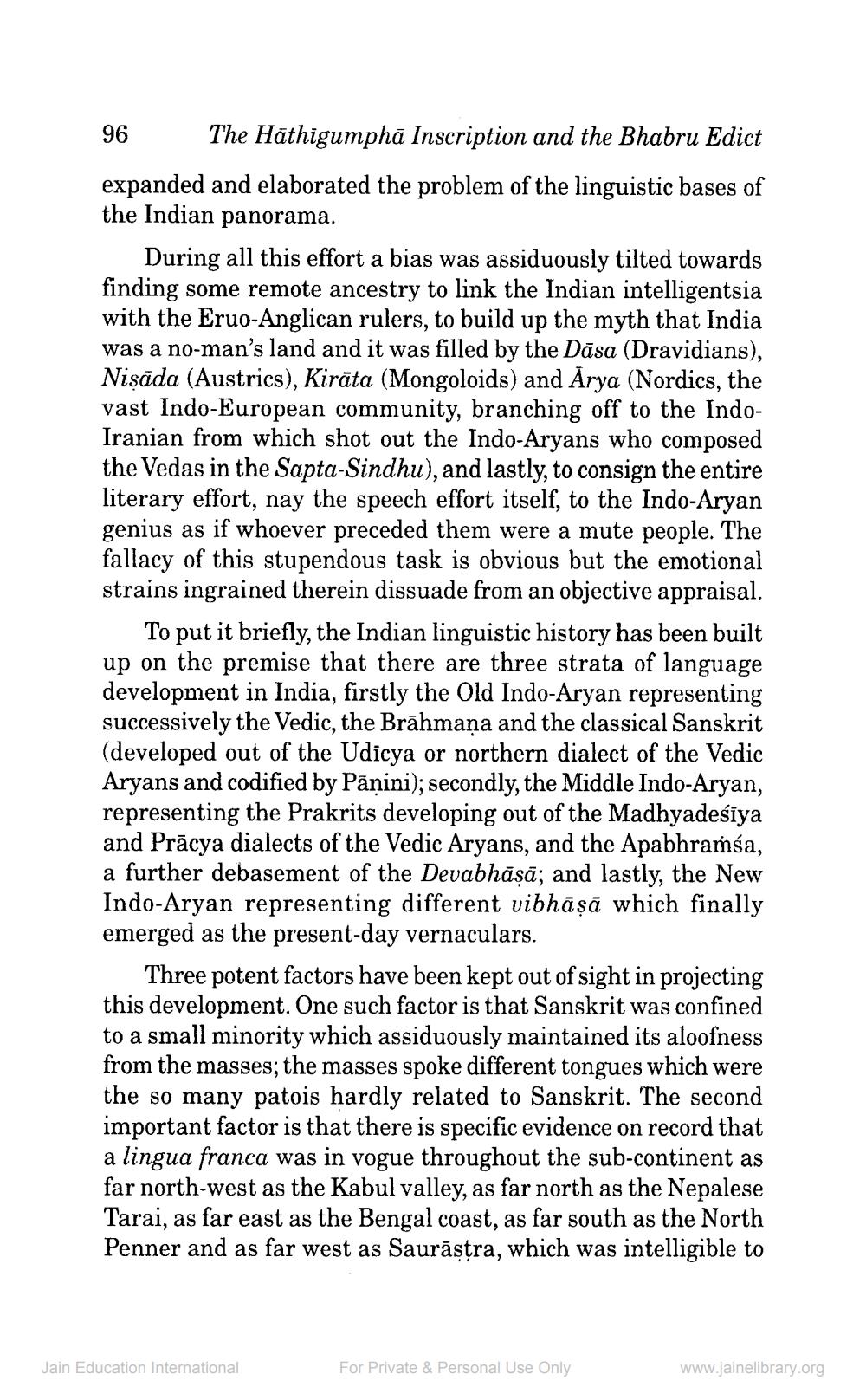________________
96
The Hāthigumphā Inscription and the Bhabru Edict
expanded and elaborated the problem of the linguistic bases of the Indian panorama.
During all this effort a bias was assiduously tilted towards finding some remote ancestry to link the Indian intelligentsia with the Eruo-Anglican rulers, to build up the myth that India was a no-man's land and it was filled by the Dāsa (Dravidians). Nişāda (Austrics), Kirāta (Mongoloids) and Arya (Nordics, the vast Indo-European community, branching off to the IndoIranian from which shot out the Indo-Aryans who composed the Vedas in the Sapta-Sindhu), and lastly, to consign the entire literary effort, nay the speech effort itself, to the Indo-Aryan genius as if whoever preceded them were a mute people. The fallacy of this stupendous task is obvious but the emotional strains ingrained therein dissuade from an objective appraisal.
To put it briefly, the Indian linguistic history has been built up on the premise that there are three strata of language development in India, firstly the Old Indo-Aryan representing successively the Vedic, the Brāhmaṇa and the classical Sanskrit (developed out of the Udicya or northern dialect of the Vedic Aryans and codified by Pāṇini); secondly, the Middle Indo-Aryan, representing the Prakrits developing out of the Madhyadesīya and Prācya dialects of the Vedic Aryans, and the Apabhramsa, a further debasement of the Devabhāsā; and lastly, the New Indo-Aryan representing different vibhāṣā which finally emerged as the present-day vernaculars
Three potent factors have been kept out of sight in projecting this development. One such factor is that Sanskrit was confined to a small minority which assiduously maintained its aloofness from the masses; the masses spoke different tongues which were the so many patois hardly related to Sanskrit. The second important factor is that there is specific evidence on record that a lingua franca was in vogue throughout the sub-continent as far north-west as the Kabul valley, as far north as the Nepalese Tarai, as far east as the Bengal coast, as far south as the North Penner and as far west as Saurāṣtra, which was intelligible to
Jain Education International
For Private & Personal Use Only
www.jainelibrary.org




